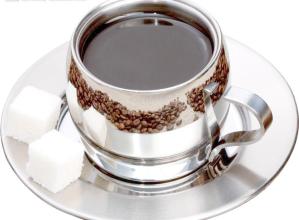Introduction to Paradise Bird Manor in Wiki Valley, a coffee-producing area of Papua New Guinea.
The frost in 1975 destroyed most coffee crops in Brazil, but it affected the development of the coffee industry in Papua New Guinea.
* * A scheme has been implemented to subsidize rural or collective landowners to create about 20 hectares of coffee plantations. This measure
Shi did increase the penetration of coffee in the local economy, and by 1990, the annual output had reached 1 million bags.
However, it is almost inevitable that the surge in production leads to a decline in quality. Before 1991, the quality of coffee was good, and most of it belonged to Y grade.
. The quality gradually declined after 1991, and the European market was lost with it. The extra price of coffee such as Y is gradually.
Down. This is related to the country's policy of "one registration, one price". This policy applies to a line as volatile as coffee.
As far as industry is concerned, it is not feasible at all. As a result, poor quality coffee beans have damaged the image of high quality standards of coffee such as Y, resulting in
There is a backlog.
* * the countermeasure is to establish a new quality grade, temporarily suspend the production of coffee such as Y, and no longer implement "one grade, one price".
The policy of. This allows buyers to price according to quality, which is bound to have an impact on the income of farmers who produce shoddy coffee beans. To
In 1993, the quality problem was basically solved. Most regular customers are buying coffee from Papua New Guinea again.
. Coffee such as Y is now sold at a slightly lower extra price, indicating that the quality has improved.
Although coffee production is exuberant in some places, the coffee beans harvested vary from raw to ripe due to the lack of persistence of the growers.
Little different. Among the high grades, AA is rare, and generally available are An and AB. The main characteristics of Grade A coffee are:
The particles are plump, the acidity is too light, and the aftertaste is endless.
The flavor is varied, the taste is rich, the granule is full, and the use is wide.
The recommended cuff method is light to moderate roasting in Papua New Guinea, where about 75% of coffee products come from small local farms. Many farms are reclaimed in the forest.
The land, some farms deep in the forest, is almost isolated from the rest of the world. The coffee in the country is grown on highlands between 1300 and 1800 meters above sea level.
Therefore, the quality is very high. Although coffee is also grown in some lowlands, the yield is relatively small. Locally grown coffee
Most of the caffeine is grown under natural conditions because of the problems and high costs of transporting fertilizers and pesticides to the farm.
The coffee industry plays an important role in the country's economy. 1 million people are directly and indirectly engaged in the industry. * * approved
Provide the lowest purchase price to encourage planting. The industry itself is controlled by the Coffee Industry Committee. The committee is located in GE, east of Mustard Island.
Roca, however, the export business is handled by private companies

Important Notice :
前街咖啡 FrontStreet Coffee has moved to new addredd:
FrontStreet Coffee Address: 315,Donghua East Road,GuangZhou
Tel:020 38364473
- Prev

Bitter, fragrant and delicious Guatemalan coffee beans are introduced to the Waiqiang Plateau.
Bitter and fragrant, taste good highland coffee mellow and with a good sour taste, well received, is the best material for mixed coffee. Coffee variety: Arabica (Arabica): accounts for 85% of total coffee production, including Brazil, Colombia, Guatemala, Ethiopia and so on. Beans are turquoise, beans are thin, have special aroma and sweet acid, and are mixed with other coffee
- Next

Mild taste, very aromatic and mellow Nicaraguan coffee producing area Matagalpa
Its particles are moderate in size, mild in taste and very aromatic and mellow. Nicaragua is located in central Central America, and the best coffee in Nicaragua is produced in Sinotega and Novo Segovia in Matagalpa. All the photos in this article were taken on Matagalpa. Gentle and graceful Nicaragua Coffee and Nicaragua Coffee and Guatemala Coffee
Related
- Does Rose Summer choose Blue, Green or Red? Detailed explanation of Rose Summer Coffee plots and Classification in Panamanian Jade Manor
- What is the difference between the origin, producing area, processing plant, cooperative and manor of coffee beans?
- How fine does the espresso powder fit? how to grind the espresso?
- Sca coffee roasting degree color card coffee roasting degree 8 roasting color values what do you mean?
- The practice of lattes: how to make lattes at home
- Introduction to Indonesian Fine Coffee beans-- Java Coffee producing area of Indonesian Arabica Coffee
- How much will the flavor of light and medium roasted rose summer be expressed? What baking level is rose summer suitable for?
- Introduction to the characteristics of washing, sun-drying or wet-planing coffee commonly used in Mantenin, Indonesia
- Price characteristics of Arabica Coffee Bean Starbucks introduction to Manning Coffee Bean Taste producing area Variety Manor
- What is the authentic Yega flavor? What are the flavor characteristics of the really excellent Yejasuffi coffee beans?

